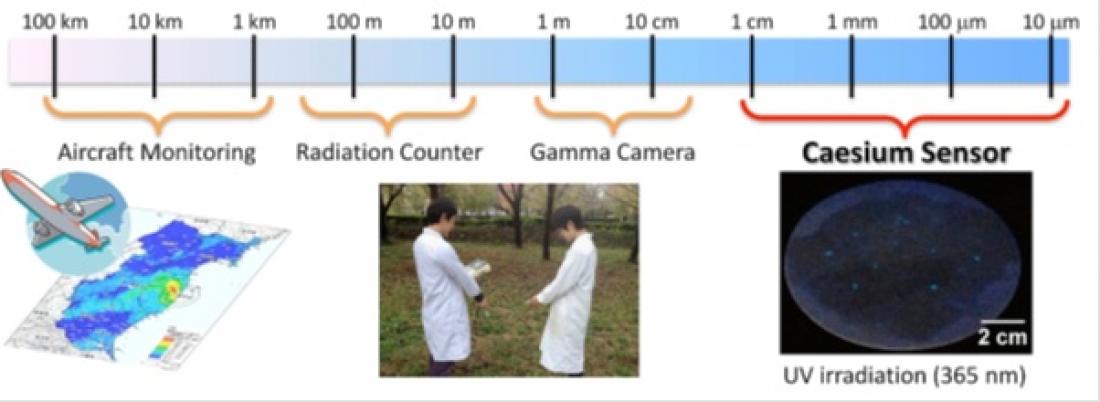Schematic of spatial resolution of radioscopes and caesium sensor
Radioactive leaks, such as at the Fukushima Daiichi nuclear plant in Japan, contaminate the local environment. Contamination of soil and water by the radioactive form of caesium is a major problem, since it persists for a long time; levels of radioactivity reduce by half only every 30 years. Effective detection and removal of radiocaesium would accelerate recovery of the environment.
Current detection methods can only localise contamination on a scale of metres to kilometres, and they do not specifically identify caesium. Researchers in Japan, led by Katsuhiko Ariga at the National Institute for Materials Science, have now developed a way to detect caesium contamination on a scale of millimetres. The work, published in Science and Technology of Advanced Materials, used a fluorescent molecule that labels caesium so that it can be seen with the naked eye under UV light.
The reaction of the molecule with a number of alkali metals caused it to fluoresce. However, while metals such as lithium, sodium and potassium caused blue fluorescence, its reaction with caesium produced a distinctive green fluorescence. This enabled accurate identification of small contaminated areas. The exact colour of the fluorescence also related to the concentration of caesium, revealing the extent of contamination.
The simplicity and accuracy of this fluorescent probe should help with more precise removal of contaminated material. It will also help to improve our understanding of contamination around chemical and radiological hazards, allowing the construction of contamination maps and the implementation of appropriate responses.
Media contact:
Mikiko Tanifuji
National Institute for Materials Science, Tsukuba, Japan
Email: [email protected]
Tel. +81-(0)29-859-2494



